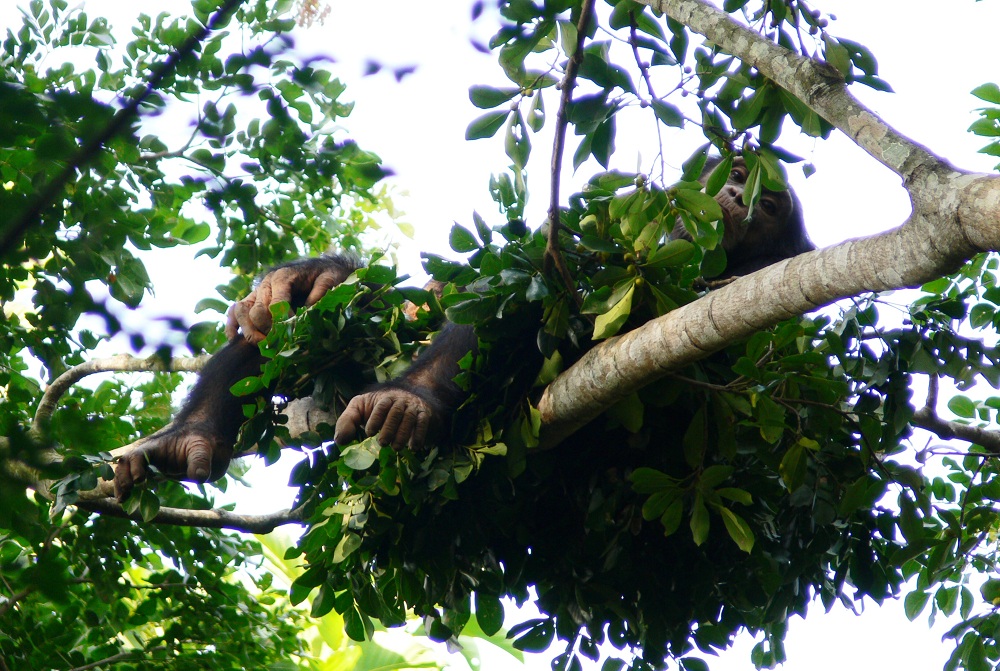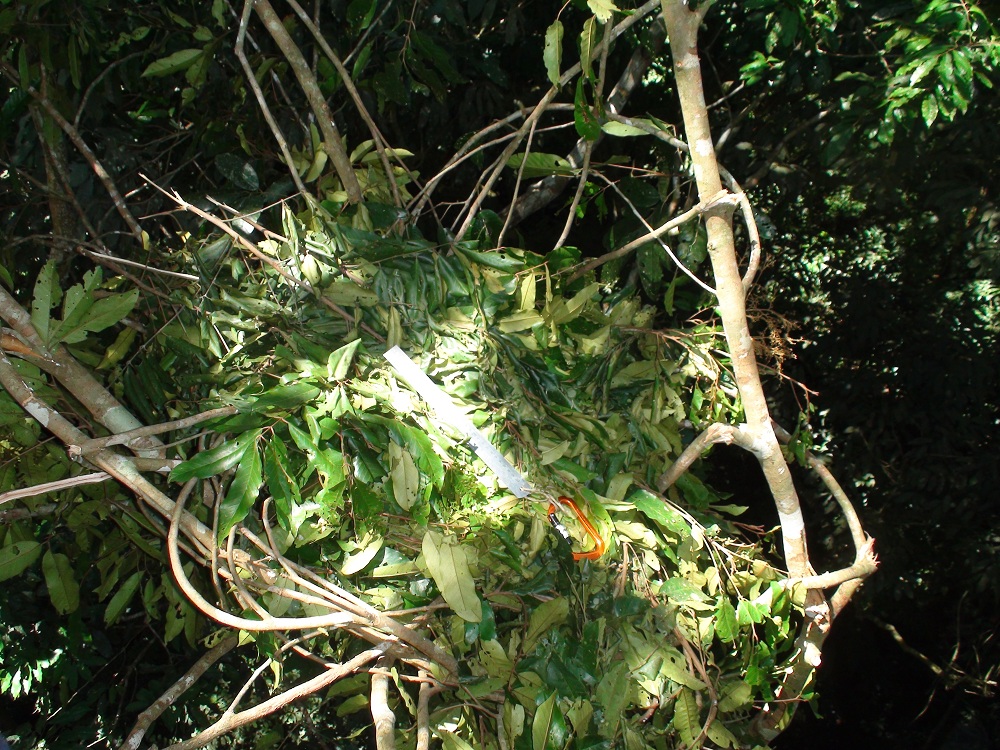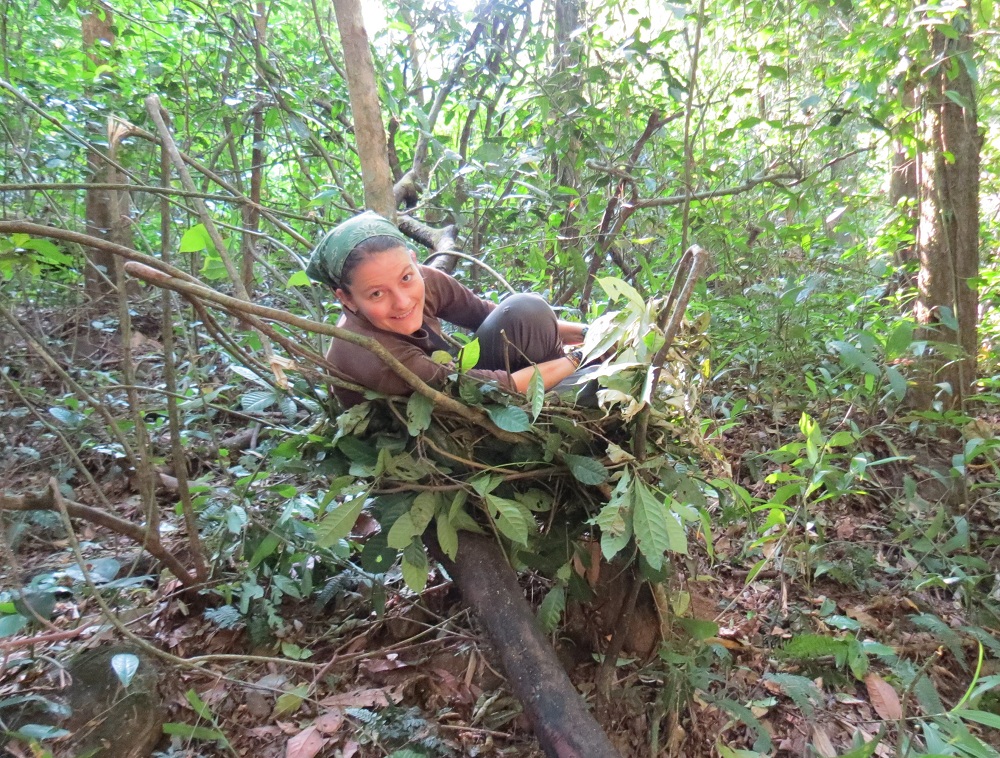Apes' Simple Nests Are Feats of Engineering

When they are ready to snuggle up at the tops of trees, great apes make themselves cozy "nests" in which to rest for the night. New studies of these one-night nests reveal their incredible complexity.
"They are almost as complex as a man-made shelter you might make," study researcher A. Roland Ennos of the University of Manchester, in the United Kingdom, told LiveScience. "They know how the wood is going to break, and they have a feel for how strong they have to make it [the nest]. That shows the apes have intelligence and have a feel for the physics of their environment."
These nests are about 4 to 5 feet long and about 3 feet wide (1.2 to 1.5 meters long, and slightly less that 1 meter wide). The apes make them in the forest canopy, which can be between 30 and 60 feet (10 and 20 m) up, and it takes them only about 10 minutes to build. They use the nests only once, and then move on. The nests keep them warmer, away from insects and keep them safe, up off the forest floor.
Nests for napping
In the new study, published today (April 16) in the journal Proceedings of the National Academy of Sciences, the researchers studied fresh nests left by wild orangutans in Indonesia. They studied the size, shape and composition of the nests, which are made in the crooks of large branches; living branches about an inch (3 centimeters) wide, are bent and interwoven to form the nest.

"They are just bent. They can actually stay living and later on you can go back to them and see they are like an archeological artifact of all these strangely bent items," Ennos said. "It's very similar to weaving a basket, they have to break the branches, weave them together and form a nice, strong, rigid structure." [Sleep Soundly: Images of Primate Nests]
They even use the smallest branches to line the nest, building a mattress and pillow of sorts.
Sign up for the Live Science daily newsletter now
Get the world’s most fascinating discoveries delivered straight to your inbox.
These complicated nests are a sort of tool for the apes. "In order to build these nests they must have some sort of picture and feel for the world and the strength of branches and how they behave," Ennos said. "People talk about man as the tool user and tool master, but the nest of the orangutan is really a complicated tool for sleeping."
Chimp nests
Other great apes make complex nests as well, including chimpanzees and bonobos. Another recent study, published March 28 in the American Journal of Physical Anthropology, analyzed the nest-building habits of West African chimpanzees.

The researchers saw the chimps built nests very similar to those of the orangutans, except sometimes the chimps chose to nest on the ground. To find out what caused the chimps to sleep on the ground versus way up in the trees, where it's seemingly safer from predators, the researchers gathered information about the areas where they found either ground or tree nests.
Chimpanzee nest-building habits could provide clues to what drove humans from the trees. Researchers have suggested that perhaps a lack of trees in different habitats could have caused humans to nest on the ground. The new study didn't find evidence that ground-nesting chimpanzees do so because of a lack of trees. (Past research published in 2011 in the American Journal of Physical Anthropology found that chimp nests in trees were better at keeping away insects and were also warmer than sleeping on the ground.)
"This suggests that our direct ancestors were neither the only, nor the first, species to come down from the trees," study researcher Katherlijne Koops, of the University of Cambridge, said in a statement. "This is intriguing as it has long been believed that coming down from the trees was a crucial evolutionary shift."
You can follow LiveScience staff writer Jennifer Welsh on Twitter, on Google+ or on Facebook. Follow LiveScience for the latest in science news and discoveries on Twitter and on Facebook.
Jennifer Welsh is a Connecticut-based science writer and editor and a regular contributor to Live Science. She also has several years of bench work in cancer research and anti-viral drug discovery under her belt. She has previously written for Science News, VerywellHealth, The Scientist, Discover Magazine, WIRED Science, and Business Insider.










